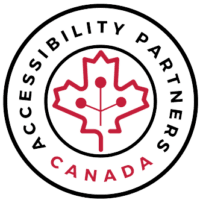The commitment to inclusivity has become a cornerstone for organizations across the public sector spectrum. From federal agencies to provincial bodies and municipal entities, diverse public sectors share a common goal — ensuring their digital landscapes are accessible to everyone.
In this pursuit for inclusivity, you must be wondering what is VPAT? Well, the VPAT accessibility emerges as a vital tool. Public sectors, spanning federal, provincial, and municipal domains, all confront a unique set of challenges in the digital realm, including:
- Meeting legal compliance standards while navigating complex digital landscapes
- Ensuring digital content accessibility for individuals with diverse disabilities, language preferences, and technological proficiency
- Guaranteeing that critical information is accessible to all, including those with visual or hearing impairments
- Maintaining accessibility across large-scale digital platforms handling a vast amount of data and transactions
- Designing user interfaces that facilitate tasks like tax filings, permit applications, or healthcare registrations
- Balancing the investment in sophisticated accessibility solutions with financial limitations
While these hoops may pose a challenge, the IT Industry Council (ITI) created Voluntary Product Accessibility Template (VPAT) as a guide to ensure that digital products and services adhere to standards with the help of Accessibility Partners.
What Is VPAT and What Is It Used For?
When Canada introduced the Accessible Canada Act (ACA), it aimed to help organizations provide accessible services to those with disabilities, including web accessibility and accessible digital content like PDFs. While the ACA is enforced on the federal level, each province in Canada has its own regulations that add to the federal accessibility law—such as the AODA compliance and requirement.
Depending on which province the organization is located in, public sectors must submit accessibility plans to ensure they’re actively promoting inclusivity and adhering to regional accessibility standards. In provinces that don’t have a requirement and wonder what is VPAT? Then this common practice helps to ensure they’re sticking to federal laws and providing accessible opportunities.
The VPAT template is a standardized form that evaluates how accessible a product is for users with disabilities. This assessment helps prospective buyers understand the product’s alignment with accessibility standards and its suitability for accommodating users with disabilities.
For example, consider a VPAT evaluation of an online tax filing system offered by the City of Toronto. The VPAT assesses features such as the system’s compatibility with screen readers, the clarity of instructions provided in text, and the ease of navigation for users with motor disabilities.
In this example, VPATs with a favorable rating guarantee that individuals, regardless of their abilities, can independently and effectively file their taxes online, reinforcing the government’s commitment to inclusivity in public services.
Overall, VPATs serve as roadmaps for organizations to clarify how their products align with the standards outlined in the Section 508 Amendment to the Rehabilitation Act of 1973. These VPAT 2.1 requirements for web and software accessibility are closely based on the Web Content Accessibility Guidelines 2.0 (WCAG 2.0).
Why Is a completed VPAT report Important?
VPATs are crucial because they act as a bridge between product developers and users, ensuring that accessibility is an integral part of product design.
Part of promoting accessibility and inclusivity is ensuring accessibility standards are incorporated into new practices, policies, products, and services early in the process. This includes:
- Creating or adopting an accessibility checklist
- Implementing the checklist in the beginning stages of new projects
- Educating staff and members in charge of new projects
- Testing accessibility features throughout milestones
- Updating the checklist to meet the latest accessibility standards
Some organizations may create their own checklist, and others may reference the Voluntary Product Accessibility Template. Regardless, the importance of a completed VPAT report lies within its function: ensuring the products and services organizations procure align with accessibility standards, fostering inclusivity and equal access for all citizens.
How to Create a Voluntary Product Accessibility Template?
Luckily, creating a VPAT is a manageable task. As a matter of fact, you can either create your own (as long as it follows the latest WCAG 2.0 or 2.1 guidelines), or you can find the latest templates available on the Information Technology Industry Council (ITIC) site most relevant to your needs.
If you choose to create your own VPAT, there are a few things to consider.
1. Be sure you understand the latest accessibility standards.
Organizations need a deep understanding of relevant accessibility standards when creating their Voluntary Product Accessibility Template. This includes understanding the Web Content Accessibility Guidelines (WCAG), Section 508, and any federal or provincial act to ensure accurate assessments and documents of product accessibility.
2. The created VPAT must have a thorough product assessment.
Organizations must thoroughly evaluate each accessibility feature and functionality to determine its level of accessibility. This includes testing aspects like navigation, multimedia, forms, and other interactive elements which helps it easy to understand what is VPAT?.
3. Document all findings throughout the assessment.
Clear and detailed documentation of findings is crucial for transparency and understanding. Organizations must document not only whether a feature is accessible but also provide information on how it complies with specific accessibility standards.
4. Ensure you are aligned with legal requirements.
Because there are multiple accessibility acts enforced throughout Canada, it’s crucial that your VPAT aligns with all legal requirements and industry standards, which includes understanding the ACA and the accessibility act enforced in your province.
5. Include in-house or third-party accessibility experts.
Having accessibility experts involved in the process is highly beneficial. Whether you hire in-house experts or third-party organizations, they can provide insights into best practices, offer guidance on testing methodologies, and ensure the evaluation is thorough and accurate.
6. Incorporate user feedback.
User feedback, especially from individuals with disabilities who have used the product, plays a vital role. This real-world feedback provides valuable insights into the user experience (UX) and identifies areas for improvement.
7. Make sure to perform regular updates.
Accessibility standards and technologies evolve. Therefore, it’s essential that you stay up-to-date by regularly updating VPAT assessment to reflect changes in standards, technologies, or the product itself.
8. Provide VPAT Training for assessors.
VPAT training should be available for individuals responsible for creating the template. This includes training on accessibility standards and evaluation techniques to provide consistency throughout the process.
As an organization of the public sector, you should learn what is VPAT.
There is no VPAT certification.
Instead, organizations self-disclose their VPATs to communicate the level of accessibility of their products to potential buyers.
By prioritizing and learning what is VPAT, public sectors can offer seamless digital experiences, ensuring that every citizen can engage with government services effectively regardless of abilities. In an age where digital interactions are integral, VPAT is one more resource for public sectors to utilize and ensure compliance with accessibility laws while promoting inclusivity.
Work for the public sector? Then, fill out the contact form below.
Let us review your Voluntary Product Accessibility Template to ensure it’s accurately up-to-date. And if you don’t have one, we’ll help you make one.

